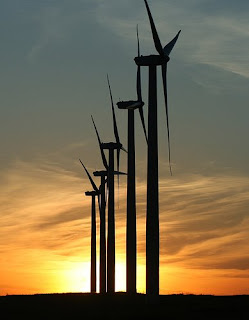 Following my post from last Monday on the Hanford nuclear waste storage facility along the Columbia River Basin, a couple of stories caught my eye this week.
Following my post from last Monday on the Hanford nuclear waste storage facility along the Columbia River Basin, a couple of stories caught my eye this week.
A lot of money flows through the slots and poker tables in Las Vegas, and $9 billion probably isn’t a ton of money when you’re talking about nuclear research (which is how much has been spent on researching the nuclear waste repository in Yucca Mountain, Nevada), but the United States Department of Energy is now estimating that it will cost over $90 billion to open and operate that country’s first nuclear waste dump at Yucca Mountain. With a Federal Debt of $9.5 trillion, I get the feeling that $90 billion may not be as easy to come by as it may once have…
Southeast of Nevada, utility authorities in Texas have preliminarily approved a $4.9 billion project to construct new transmission lines to carry wind-generated electricity from West Texas to cities like Dallas. From the Washington Post:
Texas is the national leader in wind power, generating about 5,000 megawatts. But wind-energy advocates say the lack of transmission lines has kept a lot of that power from being put to use and has hindered the building of more turbines.
Most of Texas’s wind-energy production is in petroleum-producing West Texas, where nearly 4,000 wind turbines tower over oil pump jacks. The new plan would not build a slew of new turbines but would add transmission lines capable of moving about 18,000 megawatts.
Final approval of this project will lead the Lone Star State to produce more wind energy than the next closest 14 states combined. Following a $9 billion investment in wind power capacity in 2007, United States wind power capacity increased by 46% leading to March 2008, when wind power capacity had grown large enough to serve 4.9 million average households.
On the topic of the growing role of wind power in the United States, in a recent interview, Colorado-based Rocky Mountain Institute co-founder Hunter Lovins gave some interesting insights into this growing sector:
Again, wind last year came on—we brought on fifteen gigawatts. A gigawatt is roughly a nuclear-sized chunk of electricity. Fifteen gigawatts. If we’d have built fifteen nukes, you would have noticed. Nobody noticed. Wind is simply sweeping the market. It is either the first- or second-fastest growing energy supply, followed or led by solar photovoltaics, which are coming on equally rapidly.
According to Alberta Intergovernmental Affairs (pdf), Texas is “a priority state for Alberta.” So, as Alberta’s government continues its charge towards nuclear power, our political leaders would be savvy to take note of this move in energy diversification by Texas, rather than continuing to take our cues from States like Idaho and Montana.
